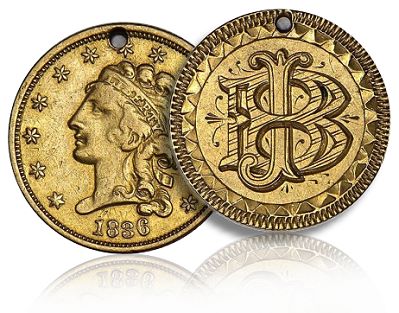Anyone know of someone who can smooth off one side of silver dimes? This was common back in the late 1800s when engravers engraved love tokens, but I have no idea how they were faced off. I guess it would take a special lathe fixture to keep the coin from spinning as it was being cut.
What I don't want to do is hand file them.
If anyone's interested in doing some let me know.

What I don't want to do is hand file them.
If anyone's interested in doing some let me know.











